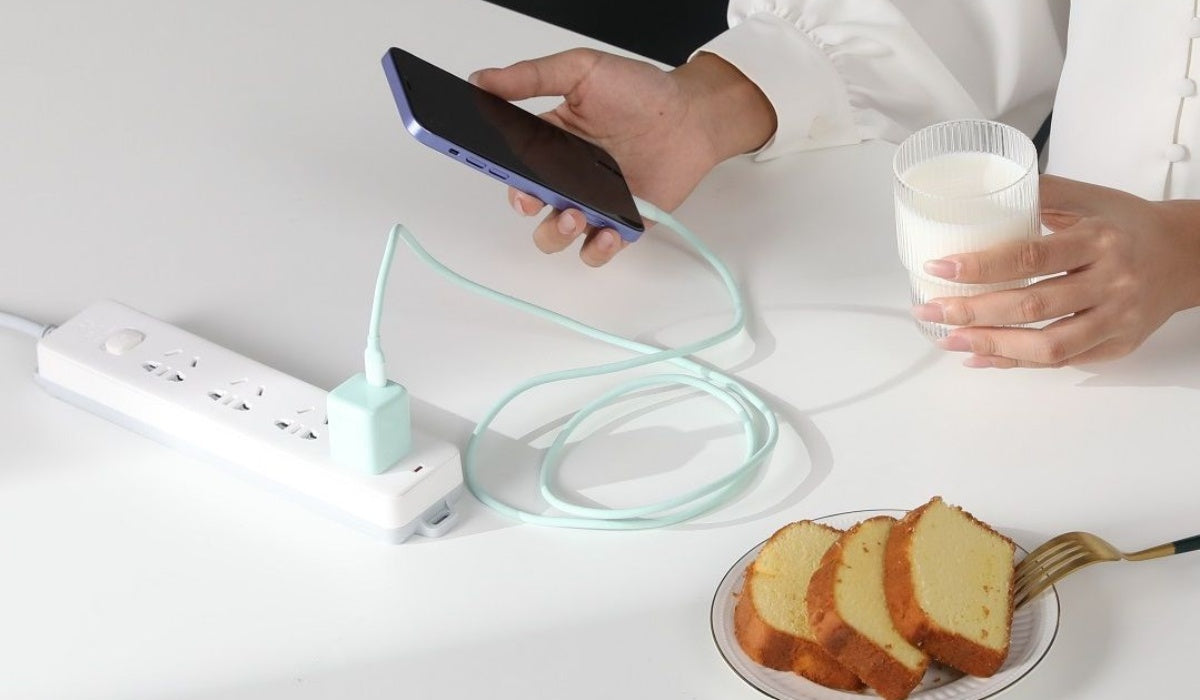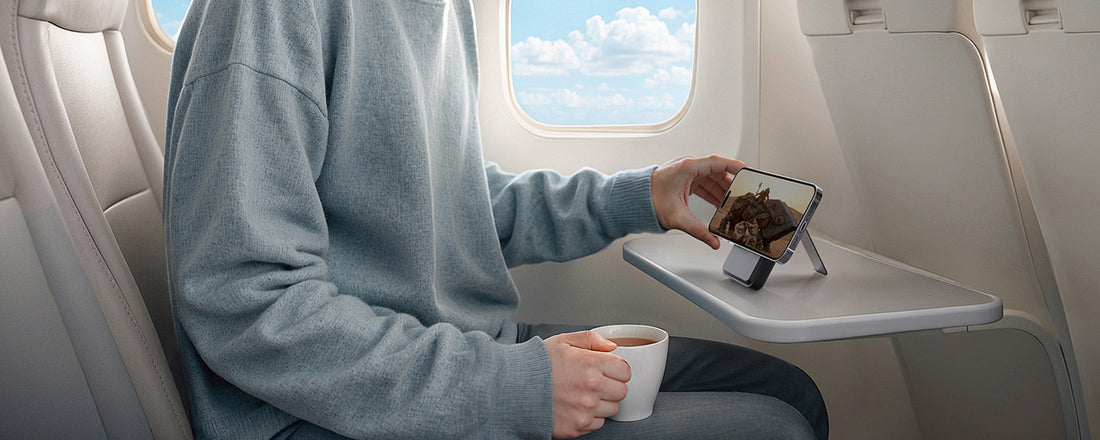Using your phone or tablet while it is charging has long been a concern among users. Many worry that this habit might shorten battery life or cause long-term damage. Fortunately, with modern battery technology and proper usage, using your device while charging is generally safe. However, the way you charge and the conditions in which you use your device still matter.

Understanding How Modern Lithium Batteries Work
Today’s smartphones, tablets, and laptops are powered by lithium-ion batteries, managed by intelligent power control systems known as PMICs (Power Management Integrated Circuits). When your device is connected to a charger, power is first used to operate the device itself. Only the remaining power is directed to charge the battery.
In other words, the device is not charging and discharging at the same time. Instead, it is primarily running on external power, which reduces the stress placed on the battery.
For example, if you are using a 20W charger and your device consumes 8W to operate, the remaining 12W will go toward charging the battery. This efficient power distribution minimizes unnecessary battery cycling and heat buildup.
When Charging While in Use Can Be Problematic
While safe under most circumstances, there are certain conditions where this practice can accelerate battery wear or trigger system protections.
High Temperatures
Heat is one of the most significant factors in battery degradation. Using your device during charging can increase internal temperatures, especially during high-power activities such as gaming, video conferencing, or recording 4K video.

Batteries perform best within a charging temperature range of 0°C to 35°C (32°F to 95°F). If the temperature exceeds 45°C (113°F), battery aging accelerates. At temperatures above 60°C (140°F), protective mechanisms may engage to prevent permanent damage.
To manage heat, avoid using your device in direct sunlight, remove heat-retaining cases while charging, and ensure the area around the device is well-ventilated.
Insufficient Charger Power
If your charger cannot supply enough power to support both device operation and battery charging, the battery may begin to discharge while still plugged in. This leads to repeated charge-discharge cycles, which can increase long-term wear.
This situation typically arises when using low-powered or non-original chargers, especially during demanding tasks. Always use a charger that meets your device’s power requirements and supports fast-charging protocols when needed.
Low-Quality Charging Accessories
Inexpensive or uncertified charging accessories can cause voltage instability, excessive ripple, and poor thermal control. These issues may damage the battery’s protective circuits or even create safety hazards such as overheating or battery swelling.
Certified accessories with protection features such as overvoltage and overcurrent safeguards are essential to maintaining long-term battery health.
Common Usage Scenarios
Low-Intensity Use
Activities such as texting, reading news, checking email, or listening to music consume minimal power. These can generally be performed safely while charging, provided the environment is not excessively hot.
Office Work and Video Calls
Routine productivity tasks like document editing or video meetings create moderate power loads and heat. These scenarios are usually safe, though users should monitor temperature in poorly ventilated spaces.
High-Power Applications
Mobile gaming, high-resolution video recording, and GPS navigation demand significant power and generate heat. These are the most likely to affect battery health when performed during charging. If such activities are necessary, using a high-wattage certified charger and keeping the device cool can reduce risks.
Best Practices for Battery Health
Maintain Optimal Charge Levels
Modern lithium-ion batteries perform best when maintained between 20% and 80%. Avoid allowing the battery to drain completely or remain at full charge for extended periods. Some devices support optimized charging modes that reduce charging speed during the night—enable this feature if available.

Manage Charging Conditions
Avoid charging your device in extreme temperatures. During charging, remove heavy or insulating cases to help dissipate heat. If your device becomes hot to the touch, unplug it and allow it to cool before continuing to use it.
Choose the Right Charger
Use original or certified third-party chargers. Ensure the output matches your device’s requirements. Fast-charging protocols such as USB Power Delivery (PD) or Qualcomm Quick Charge (QC) are safe when implemented correctly and often necessary for modern devices.
Clarifying Common Misconceptions
1. Using while charging damages the battery.
This is not true for modern lithium-ion batteries. As long as the charger is adequate and the heat is controlled, the battery is not harmed by this practice.
2. New phones need to be charged for 12 hours before first use.
This advice was relevant to older battery types. Modern batteries do not require activation charging. Normal use is sufficient from the start.
3. High-wattage chargers damage batteries.
Devices regulate the amount of power they draw. Using a 65W charger on a phone that only needs 20W will not cause harm if the charger is properly certified.
4. Wireless charging is worse than wired charging.
Wireless charging generates more heat, which can affect battery life over time. However, under controlled conditions, the impact is minor and safe for regular use.
Choosing the Right Charging Equipment
For optimal performance and battery safety, select charging products based on the device:
Smartphones: 18W to 65W
Tablets: 30W to 100W
Laptops: 65W to 140W
Look for products with safety certifications such as CE, FCC, or 3C. Features like temperature regulation, surge protection, and intelligent power control further enhance safety and efficiency.
Charging on the Go
If you frequently charge your device while traveling, use reliable mobile power sources. A 10,000 to 20,000 mAh power bank with fast-charging support is recommended for day trips. For road travel, a certified car charger with a cooling mount will help keep your device stable and cool during use.
Conclusion
Using your device while charging is generally safe, thanks to modern battery design and power management systems. The key is not avoiding the practice altogether, but using it wisely. Ensure proper ventilation, choose high-quality charging accessories, and avoid extreme temperatures or heavy power loads when possible.
Ultimately, heat—not the act of using it while charging—is the greatest threat to battery health. With the right habits and equipment, you can keep your device safe, efficient, and long-lasting.










